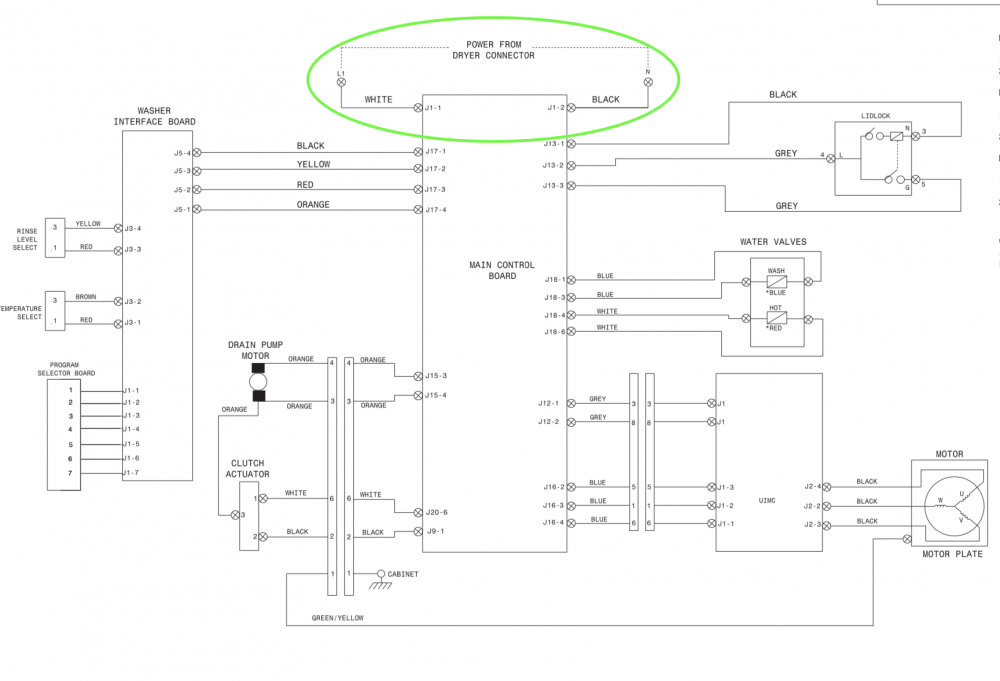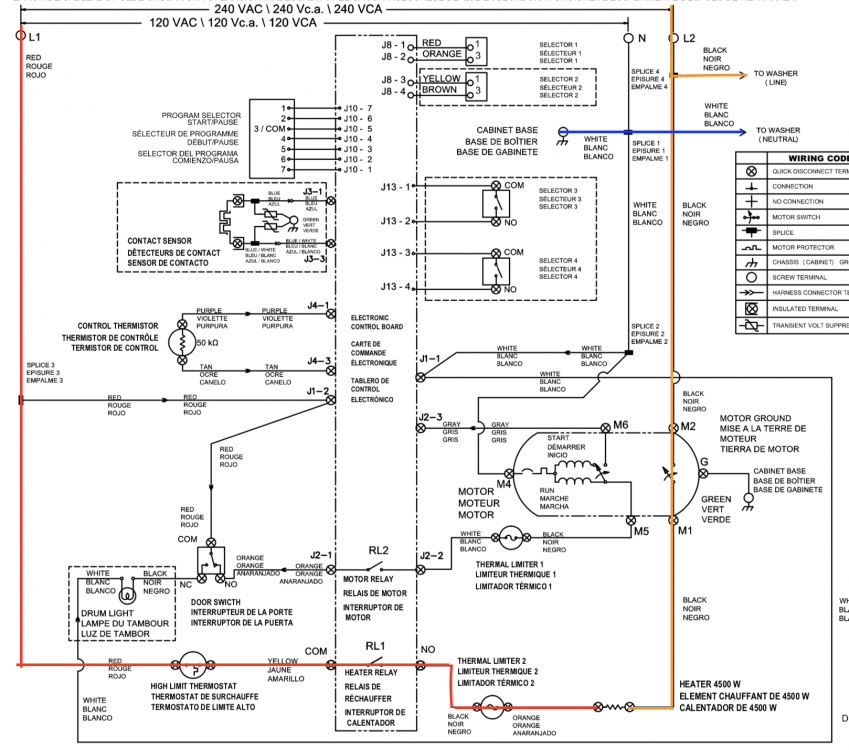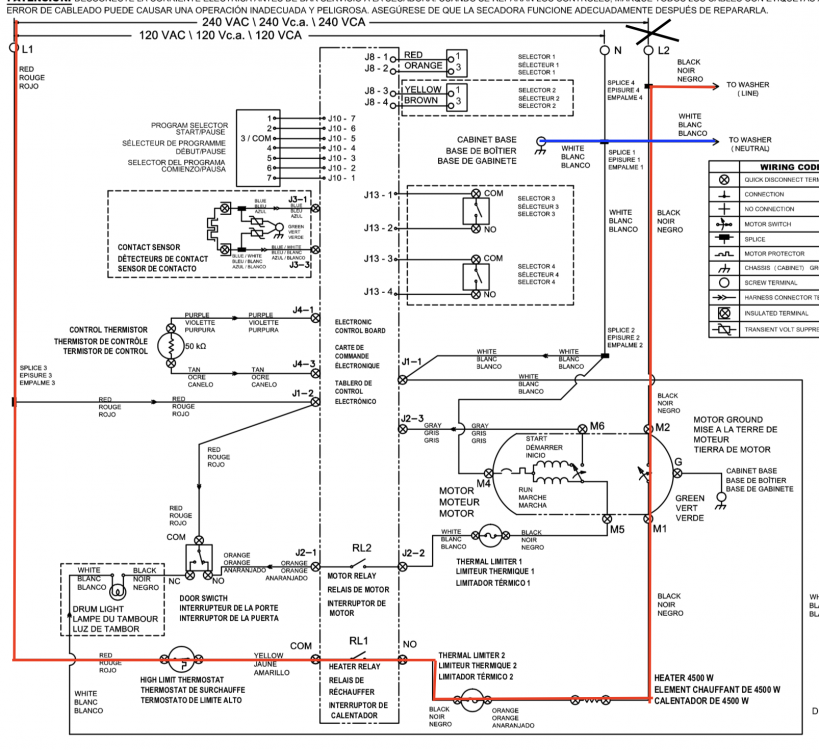Stacked Washer Only Runs When Dryer is Running
@fillthebarman ran into an interesting problem the other day: he had a stacked washer and dryer where the washer could only be run when the dryer was running. How is this possible? Brother @sh2sh2 had the answer:
QuoteSounds like no power on one of the legs, with the dryer running 120 will feed through to the other leg
A brilliant piece of insight, and precisely what turned out to be going on here. But how does this happen, exactly? Let's look at the schematics. Here's the washer:
As you can see from the circled bit, the power supply for the washer comes right from the dryer's connector. A good start! Let's look at the dryer schematic now...
Here too, you can see where L2 and neutral head off to the washer. Somehow, when one of these legs (L1 or L2) is missing, you can have the condition described earlier, where the washer can only run when the dryer is running.
I've taken the liberty of marking up the schematic to show the circuit during normal operation with the heater energized. As you can see, L2 supplies both one side of the heater as well as the entire washer. With that being the case, we can figure out which leg must be missing in order to cause our current issue: it must be L2 that's missing, since if L1 were missing, that wouldn't affect the washer.
How would L2 be missing affect this circuit? If L2 is missing, then how does the washer get line voltage at all? And why does it only get power when the dryer is running? Here's how:
There you have it: with L2 missing, L1 has no return path, and so it is present right past the heating element, all the way to the washer -- but only when the dryer is running, because that heater relay has to close and the dryer motor running for L1 to get past the control board and centrifugal switch.
This poses a couple of interesting questions: is the heater putting off heat while all this is happening? And if the heater is in series with the entire washer, isn't that going to mess some things up?
The answer to both of these questions lies in the actual resistance of the heater, which (after a little Ohm's law calculation based on the given wattage) only has about 13 ohms of resistance. Not a lot when compared to the entirety of the washer with all of its loads. The heater drops almost none of the 120 VAC supply, leaving plenty for the washer to run on. This means that the heater would be putting out almost no heat.
In fillthebarman's case, the issue turned out to be a blown house fuse in the L2 side, causing exactly the symptoms we've discussed. One simple blown fuse, but it takes a sharp tech who knows his AC circuits to see what's really happening here.
Want to learn more about tricky AC circuits so you can avoid being thrown for a loop? Check out this webinar recording on the subject, available to premium members only!
-
.png) 3
3
-
 1
1









0 Comments
Recommended Comments
There are no comments to display.